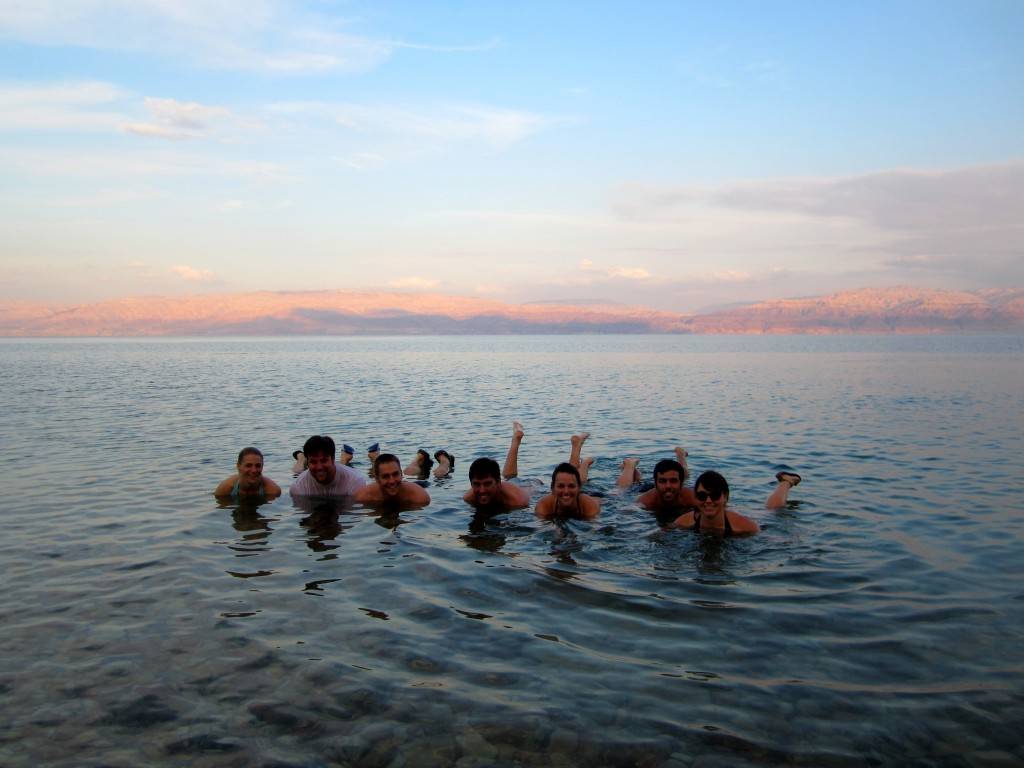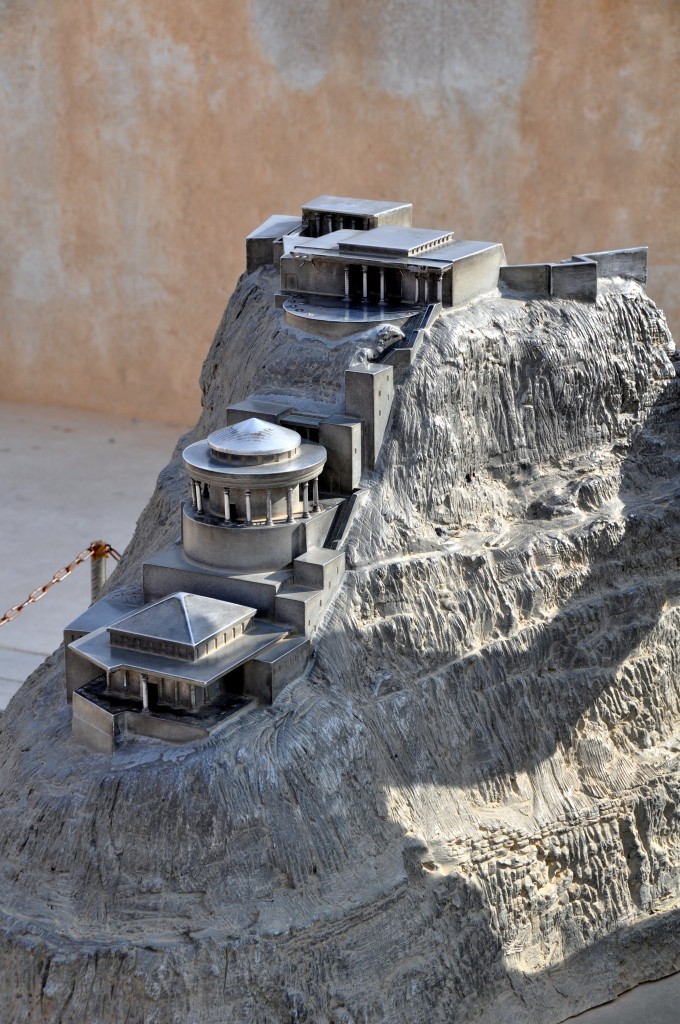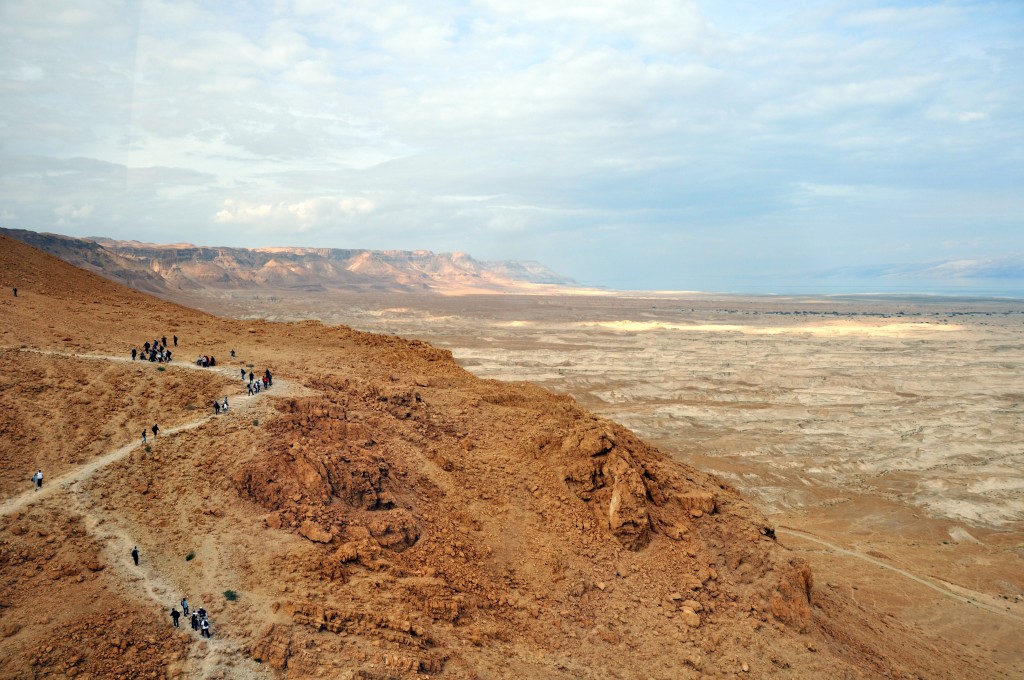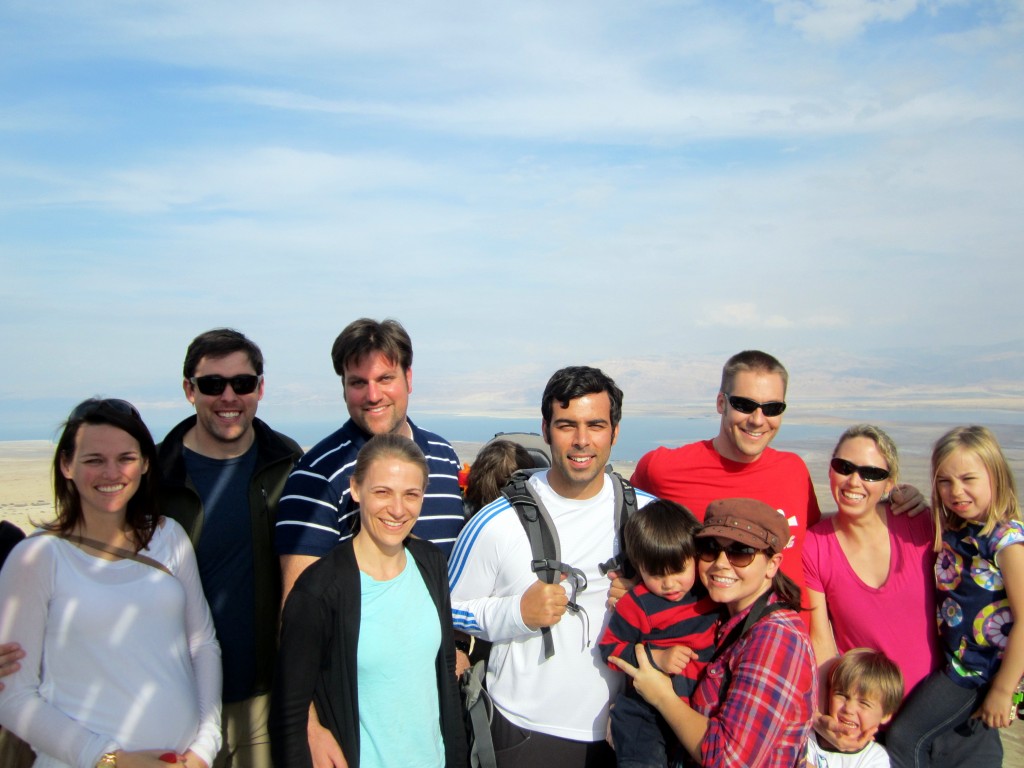These are two great sites on the far east side of Israel. The cool thing is that they are located so close to each other!
Masada – Built by Herod the Great, Masada was excavated in the 1960s. A palace in the middle of the desert, Masada in it’s heyday looked something like this:
After Herod’s death, the palace was abandoned and nearly 1,000 Jewish rebels took up residence within the walls during the Great Revolt. The rebels lived in the palace for three years and managed to hold off thousands of Roman troops who were building camps, siege walls and ramps in preparation for taking back Masada by force. On the eve of the final siege, in 73AD, Eleazar Ben Yair convinced the 960 rebels living there that it would be better to die than to live in shame as Roman slaves. The men killed their families, then themselves, before the Romans arrived. Two women and five children, who had been hiding in cisterns, survived and told the story of what happened. The mini-series, Masada, would probably tell the story much better than me.
Now a National Park, the ruins of Masada can be reached via cable car or the Snake Trail.
The entire gang at Masada.
Dead Sea – After Masada, we headed to the Dead Sea, just in time for sunset. The lowest place on Earth (1,305 feet below sea level) the Dead Sea is so salty that no marine life can survive within its waters. With such a high salt-content, mastering the art of floating was simple!
Trying to move around in the water is quite an experience! It really does hold you up without effort. This is actually a blessing in disguise because splashing around or trying to tread water risks getting some of this potent “curative water” in the eyes and mouth. I purposely touched a wet finger to my tongue, just to see. Yikes! I wouldn’t recommend it.

Mrs. & Mr. Germany, Mr. Israel ‘11, Mr. & Mrs. Israel ‘13, Mr. & Mrs. Morocco (Thanks for taking the pics Mrs. Israel ’11!)
The best part of this day? Sharing it with three other Scholar families! A short time ago, I never would have thought I’d spend a day at the Dead Sea, getting to know other Americans living all across the world. Amazing!



